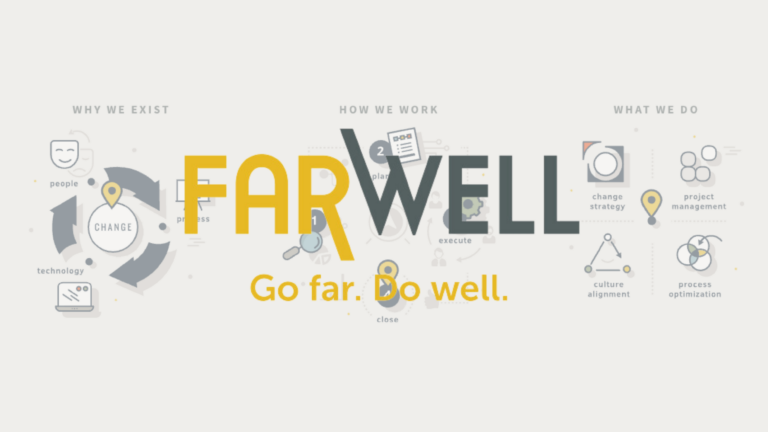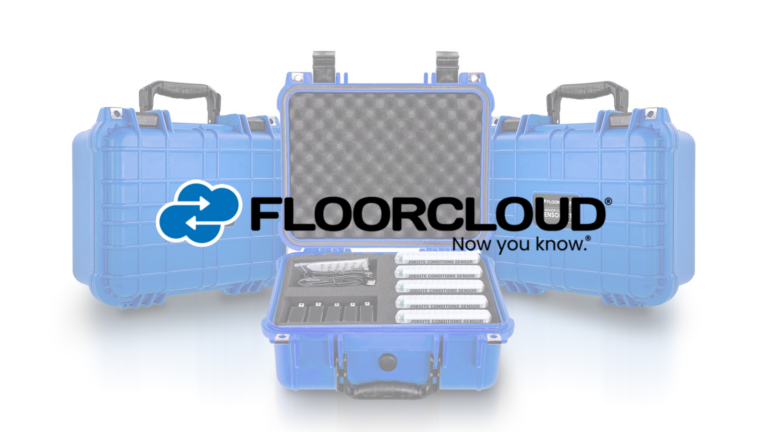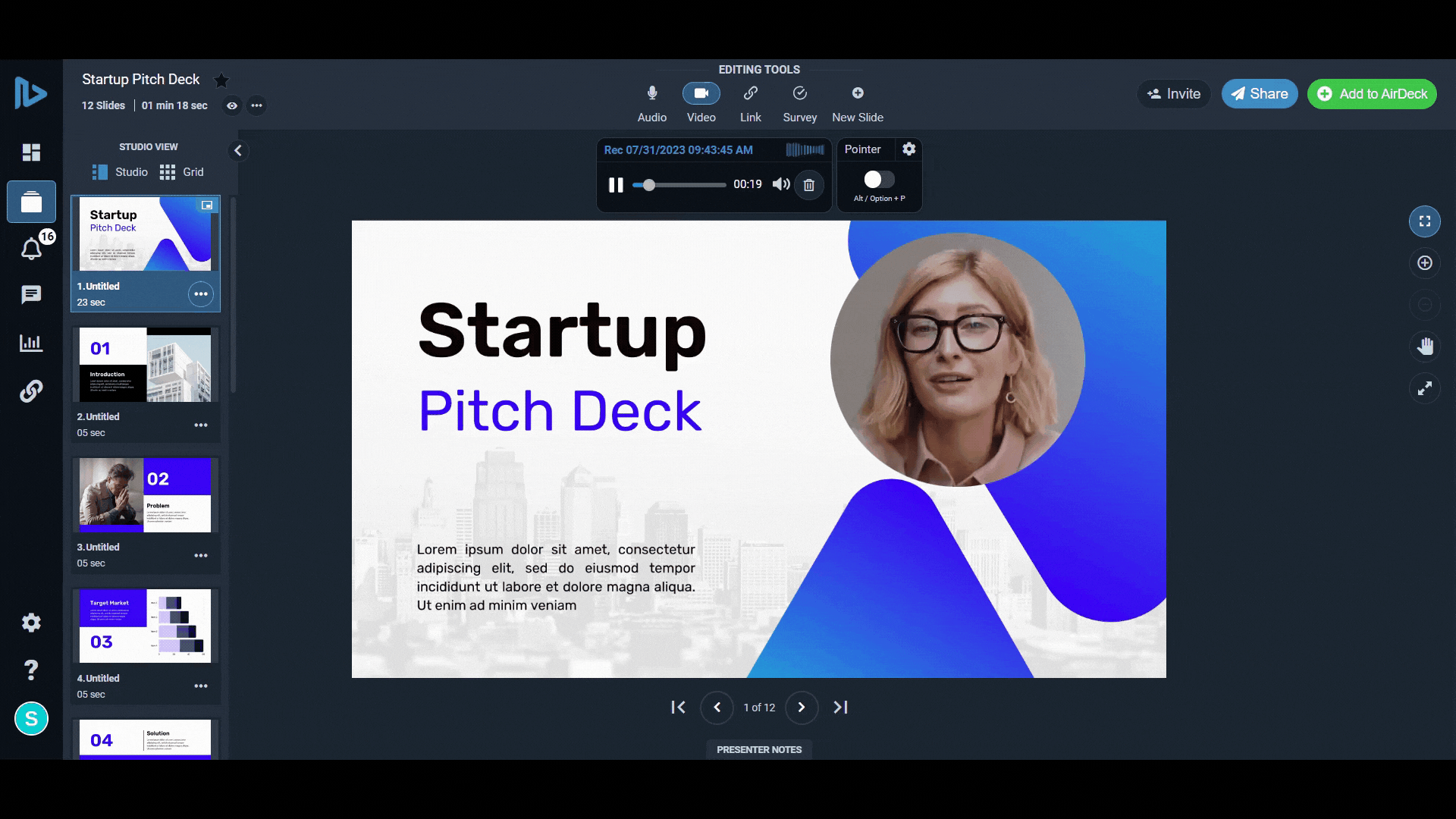Building the perfect pitch is a juggling act. You need to clearly articulate your message while keeping your audience engaged, so they’ll walk away remembering what you want them to.
More than ever, online presentations are taking center stage. When you can’t be in the same room as your audience or connect with them in real time, the challenge to create a compelling pitch is even greater for sales managers.
To step up your pitches, it takes a three-pronged approach, where you lean heavily into personalization, audio/video narration, and audience involvement.
1. Start with the Basics – then Personalize
Personalization is the key to creating pitches that resonate with your audience and make them feel valued and heard. But hand-crafting a completely personalized pitch for each niche audience is time-consuming—and in tough workday constraints where time is ever fleeting, it’s frankly just not very realistic.
AirDeck is your secret weapon to build personalized, handcrafted pitches in minutes.
Start with your basic pitch. In the introduction, make sure you share who you are, why you’re qualified to talk on the subject, and what main points you’ll cover.
Once you’ve carefully outlined your key points in this base presentation, stepping it up with customization becomes effortless with AirDeck.
Start by changing the title. Then you can add, delete, rearrange, and edit slides in minutes to turn your base presentation into a carefully curated pitch for every target audience. For example, working with a more technical audience? Add slides that dive deeper into niche details—then delete them later to eschew the technical jargon for more high-level audiences.
Manipulating slides with AirDeck takes just minutes, but the end result is a strategic pitch that treats every audience like they’re the only person in the room.
2. Step It Up with Audio/Video Narration
When sales managers have to deliver a pitch, PowerPoint slides are a staple ingredient. But what if you can’t be there in person to present your pitch live? This is a problem we’ve been seeing more of in the last few years—and it’s not going away any time soon.
For audiences who are weighed down with Zoom fatigue, silently flipping through a PowerPoint deck on their own isn’t much better. By adding audio and/or video narration to your slides, you can elevate your pitch for greater impact and improved clarity; not only does your voiceover narration evade boredom, but it also lets you clearly explain any slides that may be ambiguous or require more of a deep dive.
But recording new audio for several different pitches might seem counterproductive (isn’t that a big time suck?).
It doesn’t have to be with AirDeck.
Start with the basics, and then step it up. First, record audio that delivers your main message for your base presentation; then customize it by replacing the audio for the introduction, the conclusion, and any key slides in between.
It takes just about 30 seconds to record new audio for one slide, but the results deliver real impact.
Pro tip: Instead of recording your presentation all in one go, break it down into snippets with audio for each slide. This not only prevents you from having to start all over if you make a mistake, but it also makes editing, reworking, and customizing quick and easy.
3. Involve your audience
While we recommend preparing a script before you dive into recording your pitch, a word-for-word play-by-play usually isn’t the best approach.
To keep your audience from falling asleep during your pitch, treat it more like a conversation than a lecture.
Sales managers who truly captivate their audiences narrate their pitches like stories, keeping hard data and technical jargon to a minimum while adding interest with anecdotes, personality, and vibrant intonation.
Another way to involve your audience in your pitch is by asking them questions. This makes them feel like they’re part of the conversation (everyone would rather be spoken to than talked at), and it also gives you a chance to gain some valuable audience insights.
What about audio narrations? If you’re not presenting your pitch live, can you still ask questions?
AirDeck has an interactive survey feature that allows you to add questions to your presentation, so your audience can interact with you (and you can still get valuable insights from your pitch) even if you’re not there.
Taking a pitch from basic to top-tier isn’t complicated when you have the right tool to help you. Using AirDeck is how you get it done.















